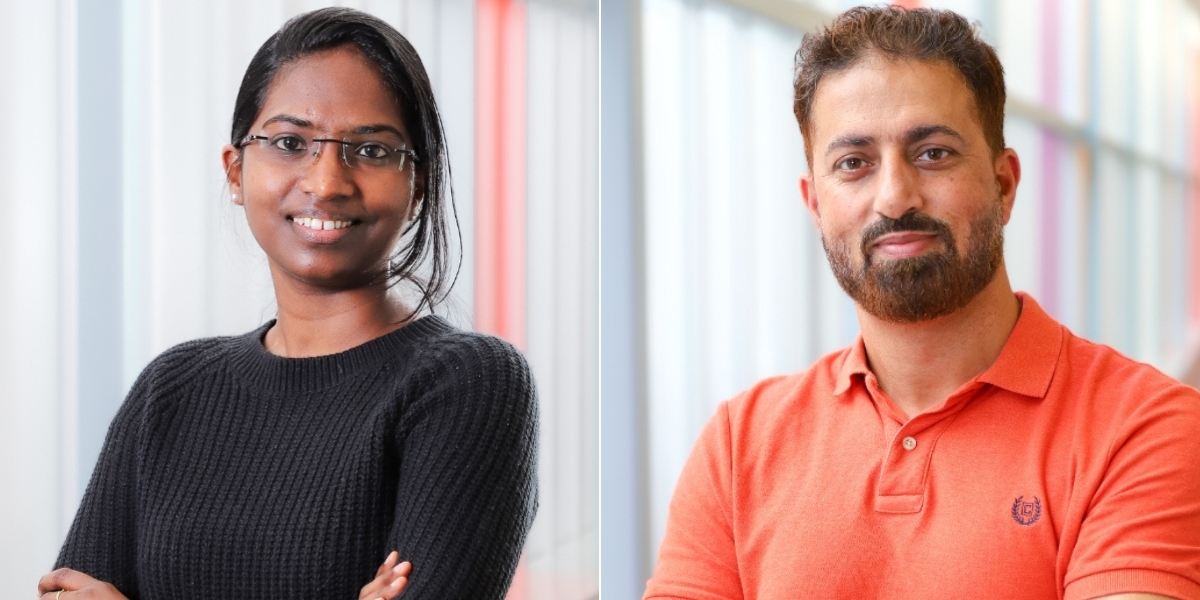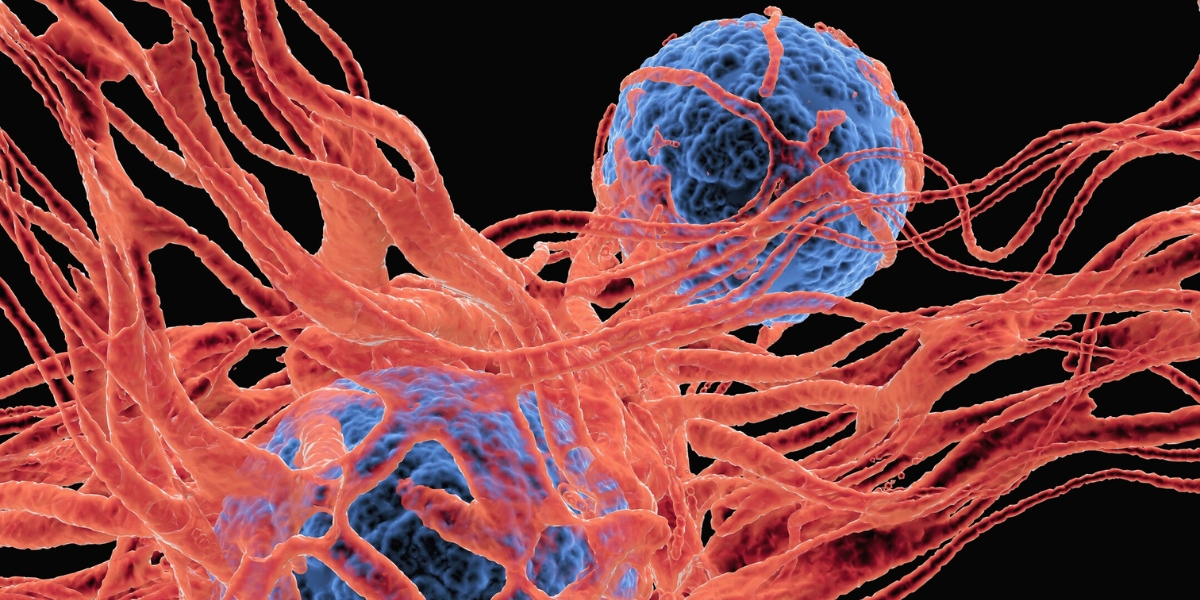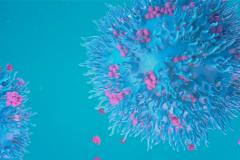When a child’s cancer returns after conventional treatment, families often find themselves in uncharted territory — scared, exhausted, and grasping for answers. But thanks to a remarkable collaboration between researchers, clinicians, and national research networks, new pediatric cancer treatment options are emerging.
We spoke with Dr. Georgina Barnabas, a former postdoctoral researcher in the Lange lab, and Tariq Bhat, a PhD candidate in the Lim lab at BC Children’s Hospital Research Institute (BCCHR) — both with the Michael Cuccione Childhood Cancer Research Program. They share how their research uncovered a treatment possibility for a child with a rare, difficult-to-treat cancer. Their study, recently published in EMBO Molecular Medicine, showcases a powerful blend of personalized tumour models, proteomics, and drug repurposing.

Your study focused on one child’s rare and hard-to-treat cancer. Why did you decide to publish this single case study?
GB: This was a very rare, slow-growing cancer that is mainly seen in adolescents. While survival rates are more than 80 per cent at five years, recurrence and metastasis are also common. There’s limited clinical guidance for recurring cases, which makes decision-making incredibly difficult for doctors. We published early to encourage similar precision-based approaches when a pediatric cancer returns or spreads.
TB: Exactly. Approximately 20 per cent of pediatric patients with recurrent or hard-to-treat cancers still lack effective treatments. We wanted to show that by understanding a tumour’s unique biology, you can find molecular vulnerabilities or unique treatment targets — even in cancers that seem untreatable.
Why is it so hard to treat relapsed or advanced childhood cancers?
TB: Childhood cancers are biologically different from adult cancers, so studying and treating pediatric cancers require access to different information. The problem is that there’s limited access to biopsy samples and a lack of pediatric cancer data and data sharing on the global level. While data-sharing systems have finally started to emerge, it will take some time for the level of data to be where it needs to be.
GB: And conventional treatments, such as chemotherapy medications, often damage healthy cells, which is particularly harmful in growing children. We need targeted therapies that are less toxic and present fewer side effects.
Your research combined proteomics with personalized tumour models. Can you explain these terms and how they can help reveal treatment options?
GB: Proteomics is the study of all proteins in a cancer cell. By mapping proteins, we can find which ones are helping the cancer thrive and target them. In this case, we found that a protein called SHMT2 — an enzyme that supports many cellular functions — was helping the cancer grow, survive, and spread.
TB: Once we had our target protein, we used a personalized tumour model that allows us to grow the patient’s tumour on a chicken egg membrane, known as the CAM or chorioallantoic membrane model. In addition to being cost-effective and robust, the CAM model only takes one to two weeks to both grow the tumour and test a potential treatment. In comparison, previous models took three to four months to complete the same work.

You ended up using an antidepressant, sertraline, to target the tumour. How did that come about?
GB: Once we identified SHMT2 as a target, we looked for medications that could block it. Sertraline, a common antidepressant, had been shown to inhibit SHMT2 in other studies. And importantly, it’s already approved for use in children.
TB: It’s crucial to understand that this isn’t a treatment for everyone, nor can it be used to prevent cancer. Sertraline worked here because the patient’s cancer cells had a specific vulnerability that is not shared in all cases.
Your research was part of the PROFYLE program. How is PROFYLE changing the way we approach precision medicine in pediatric oncology?
TB: PROFYLE — PRecision Oncology For Young peopLE — is a pan-Canadian project that brings together more than 30 pediatric cancer research centres and funding organizations to help kids who’ve run out of treatment options. Through PROFYLE, if a Canadian child’s cancer returns, they’re eligible to have a network of cancer researchers and specialists across Canada working to find them a personalized treatment and potential cure.
For families dealing with a rare or recurrent diagnosis, what message do you want them to take away?
GB: For families facing a rare or aggressive cancer, I can understand the road can be very isolating and overwhelming, but you are not alone. There are dedicated teams across Canada working to turn research into real and personalized hope. Even when a cancer seems hopeless, science is catching up. We’re learning, growing, and moving closer to personalized, effective treatments.
TB: This work gives hope — to families, doctors, and researchers. Every discovery adds a piece to the puzzle. And with national collaboration, we’re not just treating cancer. We’re building a future where more children can thrive.
Finally, how does your research help children live their best lives?
GB: We’re helping kids get back to being kids — not just surviving cancer, but thriving beyond it.
TB: Every child deserves the best possible care, no matter who they are or where they live. This belief motivates every researcher, every clinician here at BC Children’s. We are not alone. Families are not alone. We are working on the same mission, together.
*******
This Q&A was inspired by our Best Lives podcast episode titled, “Fast-tracking pediatric cancer care.”
Are you looking for the latest in pediatric research? Check out our podcast — Best Lives — on Apple Podcasts, Spotify, or wherever you get your podcasts!
The Lange and Lim labs at BCCHR are involved in the following initiatives:
ACCESS
Advancing Childhood Cancer Experience, Science and Survivorship (ACCESS) is a national research network empowering the Canadian childhood cancer community to transform the health and experiences of children and their families. It is the expert voice of pediatric cancer research and care in Canada.
PROFYLE
PRecision Oncology For Young peopLE (PROFYLE) is a pan-Canadian project that gives children, adolescents, and young adults who are out of conventional treatment options another chance to beat their cancer. PROFYLE’s research and funding partners are working together under a unique partnership to molecularly profile the tumours of these patients, no matter where they live in Canada.
BRAvE
Standard-of-care treatment for each child with cancer is primarily based on what was most effective for previous patients with the same type of disease (in other words, one treatment fits all). Precision medicine, where medications are selected based on their ability to target the specific molecular abnormalities particular to each patient’s cancer, has tremendous potential to help children in need of new treatment options.
The goal of the Better Responses through Avatars and Evidence (BRAvE) initiative at BC Children’s Hospital is to deliver more effective precision medicine to the largest possible number of children through cutting-edge research.




